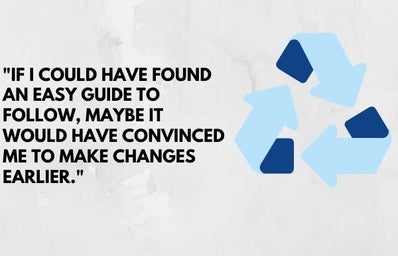With a lot more time on my hands during quarantine, I have had time to do more research about the environmental impact of my actions. As a die-hard coffee addict, I became more and more conscious of the number of plastic cups and straws I used. Over time, I started to realize that plastic coffee cups were just the beginning of the problem. For this reason, I wanted to compile a beginner’s list of simple changes you can make— starting today! If I could have found an easy guide to follow, maybe it would have convinced me to make changes earlier.
Plastic K-Cups & Tea Bags ↝ Reusable K-Cups & Tea Infusers
I bought a couple of reusable K-Cups around February because I noticed how much plastic I was consuming by drinking coffee. I did not think much about tea because I am not much of a tea drinker. However, I came across an Instagram post stating that tea bags release hundreds of thousands of micro-plastic particles when diffused with hot water. They are so miniscule that the eye cannot catch them. So in reality, you would never realize you’re digesting tons of plastic in a year without coming across this information or doing some research. Immediately after learning this, I ordered reusable tea infusers and loose green tea from amazon.
Plastic Cups & Water Bottles ↝ Reusable Coffee/Tea Mug & Water Bottle
The Plastic Ocean Organization informs that, according to the Container Recycling Institute, in 2014, 100.7 billion plastic beverage bottles were sold in the U.S. alone— estimating to 315 bottles per person. About 57% of those were plastic water bottles, equating to 57.3 billion. If that isn’t enough information to make you want to immediately stop purchasing and using plastic containers, you may also want to know that the production of a single water bottle requires about six times as much water than the bottle holds.
I, more than anyone else you will ever encounter, need a daily dose of coffee. What’s better than simply going to a Starbucks drive-thru for an iced coffee? That used to be my mindset until discovering that Starbucks uses more than 8,000 paper cups a minute— adding up to more than four billion a year. You may think that since they are called “paper” cups, it cannot be that bad for the environment, right? Wrong. Starbucks cups are lined with plastic, making them unrecyclable in all except 4 cities across the U.S. Even then, most end up in the trash and do not get recycled.
*These statistics do not take into account caps and labels. When taken into account, the numbers increase significantly
Plastic Straw ↝ Reusable Straw
Each day, Americans use half a billion plastic straws. Most of the straws aren’t recyclable and many of them end up in the ocean. So please, carry a reusable one with you!
Throw Away All Packaging ↝ Keep & Reuse Packaging
With quarantine increasing online shopping, we have all become very familiar with the brown paper inside of packages. The more I kept seeing it, I thought to myself, “How can I reduce my waste while shopping online?” Then, quarantine boredom hit and the entire world started painting. I upcycled cardboard boxes as my canvas and paint palettes, and I have reused the brown paper as a photography background. The paper can also be upcycled as gift paper and wrapping.
More Sustainable Habits:
Turn on lights from the moment I wake up ↝ Use natural light for as long as possible
Wash as clothes get dirty ↝ Wash clothes only when the laundry basket is full
Wash and rinse each item individually ↝ Soap all dishes first, then rinse
Using fresh water for plants ↝ Keep pasta and rice water for plants
Shopping brand-new ↝ Buy second-hand
Cow milk ↝ Non-Dairy Milk
BONUS: IMPACT Project
IMPACT is aimed at reducing products’ environmental impact and raising funds for humanitarian causes. As a person who has collaborated with many brands to promote their products, a lot of times, these products simply do not work with my skin type and it’s a shame to throw away a full product and have to buy a completely new one. It just did not seem logical to me. So, this is where the IMPACT project was born!
The project is a swapping system where members can request and offer products to exchange amongst each other. At the same time, members have the option of donating their products in good condition, which are later donated to homeless shelters, low resource communities and parents in need, among many others!
If you would like to check us out and become a member, follow us on Instagram and join our Facebook page for more information.
—
Edited by Sydney Keener



